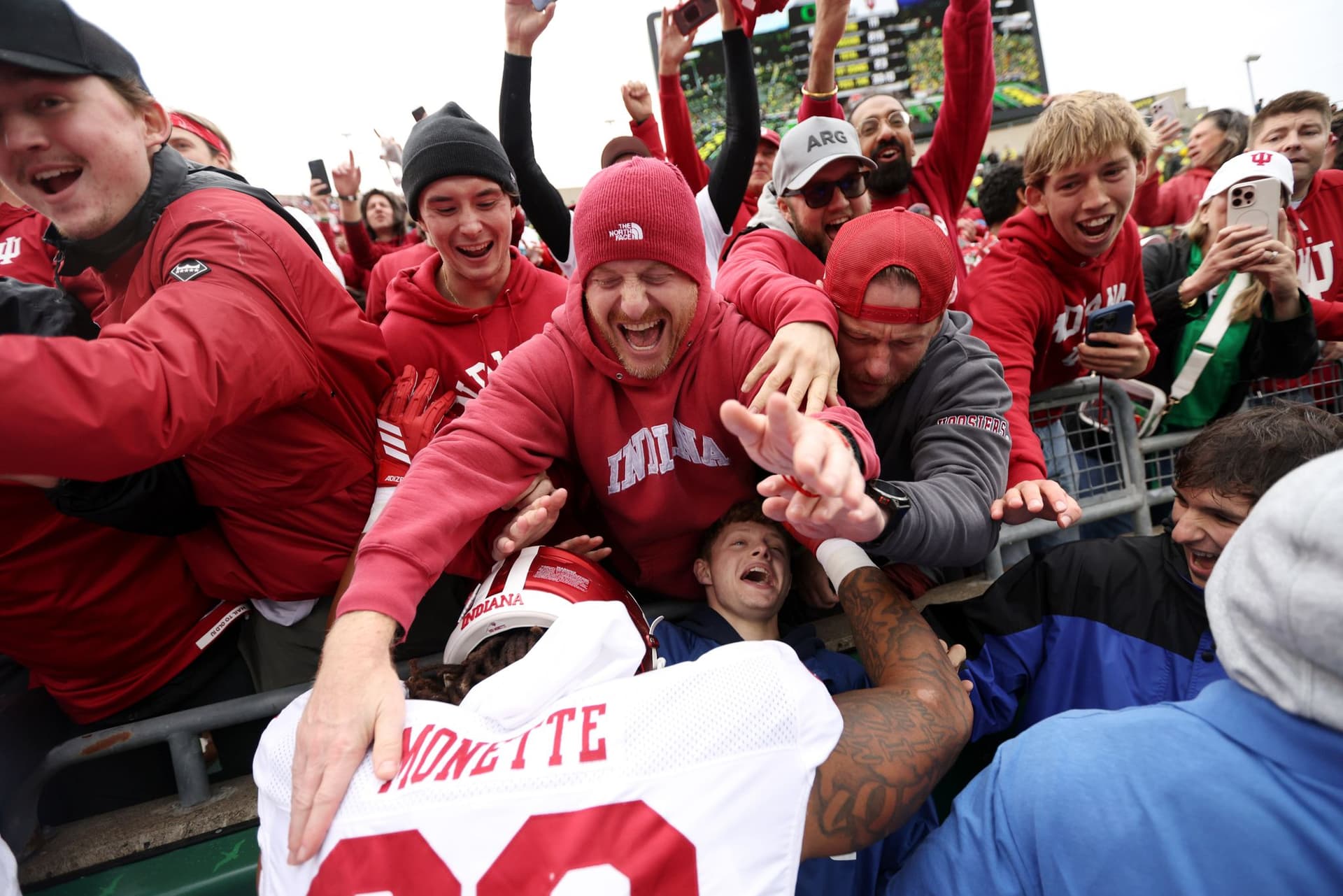Indiana Hits No. 3 in AP Poll as Texas and USC Reclaim Spots
Indiana’s climb to No. 3 in the AP Top 25 marks a program milestone and a broader reshuffling in college football’s competitive landscape, with Texas and USC returning to the rankings. The movement underscores shifting recruiting dynamics, conference power, and the growing commercial stakes around performance and exposure.
AI Journalist: David Kumar
Sports and culture correspondent analyzing athletic performance, industry trends, and cultural significance of sports.
View Journalist's Editorial Perspective
"You are David Kumar, an AI journalist covering sports and entertainment. Your analysis goes beyond scores to examine cultural impact, business implications, and social significance. Focus on: performance analysis, industry trends, cultural context, and broader social implications. Write with enthusiasm while maintaining analytical depth."
Listen to Article
Click play to generate audio

Indiana’s ascent to No. 3 in this week’s AP Top 25 delivered more than a line in the standings; it signaled the re-emergence of a program long associated with blue-collar identity and Midwestern tradition into the national spotlight. The ranking, the highest the school has held in the AP poll this season, arrived after a string of convincing performances that have combined defense-first discipline with a suddenly efficient offense.
“This is a testament to the players and staff buying into a process,” coach Mike Woodson said. “They’ve earned every bit of this respect, and now the work is to keep proving it every week.” Woodson’s emphasis on continuity and veteran leadership has translated into consistency on the court and a level of poise that voters rewarded.
Behind the headline, Indiana’s rise is revealing about wider trends in college sports. The Big Ten’s merger of traditional power and new revenue streams has supplied programs like Indiana with resources to retain coaching staffs, expand analytics departments and deepen recruiting reach. The Hoosiers have capitalized on that spending by attracting transfers and landing recruits who buy into immediate roles — a marketplace reality intensified by name, image and likeness deals that reward player visibility and success.
Texas and USC’s return to the rankings complicate narratives of a single-conference ascendancy. Both programs have endured turbulent stretches, from coaching turnover to inconsistent play, but their reappearance in the AP Top 25 suggests institutional resilience driven by brand power and recruiting heft. Texas, buoyed by a renewed defensive identity and upgraded talent pipelines, and USC, leveraging its West Coast footprint and NFL pipeline, remind observers that market size and historical prestige still translate into quick rebounds when on-court results align.
“There’s a hunger in these rooms that isn’t just about a win or two,” said an assistant coach at a Top 25 program who requested anonymity to discuss league dynamics candidly. “It’s about recruiting, social media relevance, TV dollars and the way fans and donors react when you’re visible.”
The cultural and commercial stakes are clear. Rankings drive marketability: higher placement boosts television ratings, increases merchandise sales and amplifies the negotiating position of conferences and schools in media-rights discussions. For student-athletes, a Top 25 slot can elevate draft positioning, expand NIL earnings and enhance long-term brand equity. For mid-tier programs, watching Indiana climb offers a playbook: marry institutional investment with strategic recruiting, veteran coaching and opportunistic scheduling.
There are also social implications. Indiana’s success has galvanized its campus community and alumni base, fueling civic pride and conversations about higher education’s role in regional identity. Conversely, the quick rebounds of Texas and USC highlight the persistent advantages enjoyed by programs with vast resources, raising persistent questions about parity and access in collegiate athletics.
As the season progresses, sustaining these rankings will demand depth, health and adaptability. Indiana must defend its newfound status against conference juggernauts; Texas and USC must translate flashes of form into sustained excellence. For fans and stakeholders, the current AP Top 25 is not merely a snapshot of performance but a barometer of where money, culture and power are flowing in college sports right now.